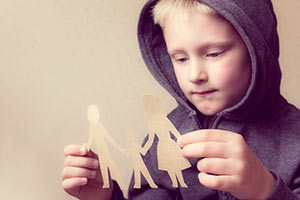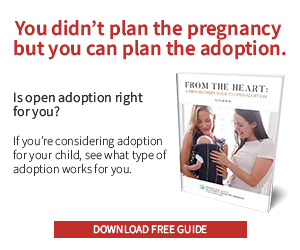ADOPTION IN
North Dakota

Whether you’re considering placing a baby for adoption or hoping to adopt a child into your own forever family, an adoption agency in North Dakota will be one of your best resources for support. The adoption process in North Dakota can differ from other states, so working with professionals and getting all the information you can up front is in your best interest.
Adoption Near Me

Considering Placing Your Baby or Child for Adoption? You can learn more here or call an adoption counselor 1-800-236-7898.
Domestic Infant Adoptions can be completed through an adoption agency or adoption attorney. Click here to connect with an adoption professional.
International Adoptions must be completed through an accredited adoption agency or attorney. You can learn more about international adoption here.
Foster Care Adoptions in North Dakota can be completed through the Department of Human Services.
Gallery of children waiting to be adopted.
Join the North Dakota adoption group in our community!
Looking for more resources in your area? Check out the Adoption Directory for a listing of adoption professionals in your state.
I’m considering placing my baby or child for adoption.
Pregnant and have questions? We can help answer your questions by telling us what works best for you.
Are you pregnant and considering adoption? Do you need help getting started?
Click here and help us understand what your needs are and the preferences you have. We can help you get started.
North Dakota Adoption
By: Jennifer S. Jones
Home of the Great Plains, the Badlands, and Theodore Roosevelt National Park, North Dakota is a state in the upper Midwestern United States. Named for the Lakota and Dakota Sioux Native American tribes, North Dakota is rich in Native American culture and beautiful scenic plains. The fourth-least populated state in the country, North Dakota’s major industries consist of agricultural and renewable energy.
If you currently reside in North Dakota and are facing an unplanned pregnancy, this article will walk you through everything you need to know about North Dakota adoption. And if you are residing in North Dakota and considering adopting from the state, or live elsewhere in the country but are considering adopting from North Dakota, this article will provide an outline of each step to complete a North Dakota adoption.
1. Types of Adoption
Finding out you are unexpectedly expecting can be a scary time. You may feel like this is not the right time in your life for a child, or you may feel like you are with the wrong partner. Whatever your reason for considering adoption, know you are making an incredibly loving choice. In North Dakota, the most common form of adoption is domestic adoption. In domestic adoption, the expectant parent chooses the prospective adoptive parent and/or works with an adoption agency to place their child. Kinship adoption is also a possibility and refers to the adoption of the child by a relative who is biologically connected to the expectant mother or the expectant father.
As a prospective adoptive parent, you may be considering domestic adoption, international adoption, or adoption from foster care. Domestic adoption refers to the adoption of an infant from either North Dakota or anywhere in the United States. With international adoption, prospective adoptive parents choose to adopt a child from a different country (such as India, China, or South Korea) and then travel to that country to bring their child home. The average age of a child adopted internationally is between 2-4 years old at placement. With adoption from foster care, some prospective adoptive parents may be currently fostering a child whom they wish to adopt, or you may be interested in adopting one of the over 50,000 waiting children whose biological parents have had their parental rights terminated. The average age of adoption from foster care is 8-10 years old.
2. Cost of Adoption
As an expectant parent, choosing adoption will cost you nothing. Any medical expenses not covered by insurance or any expenses incurred for your transportation to medical appointments or counseling appointments, counseling, and legal services, will be covered by the prospective adoptive parents. Additionally, living expenses may be covered as well. These expenses may be covered during the duration of your pregnancy and up to six weeks after the delivery of your child. As an expectant parent, these terms may be negotiated on your behalf through your adoption agency or adoption attorney.
As a prospective adoptive parent, domestic and international adoption costs are dependent on the agency you work with. Adoption from foster care may cost you nothing, and in the state of North Dakota, you may receive monthly assistance payments based on the needs of your adopted child. For all kinds of adoption, there are several adoption grants available as well as the Adoption Tax Credit, which can help offset the costs of adoption.
3. Adoption Timeline
As an expectant parent, you may choose to explore and begin the process of adoption at any time during your pregnancy. No matter if you have just found out you are expecting or are close to your due date, an adoption agency can help you place your child if that is what you choose to do. Likewise, if you make plans to place your child and then change your mind, that is okay too.
As a prospective adoptive parent, your North Dakota adoption timeline will vary depending on the type of adoption you pursue. With domestic adoption, your timeline will depend on what you are open to and how much work and finances you want to put into the process. Every prospective adoptive parent must complete an adoption home study (regardless of whether they adopt domestically, internationally, or from foster care) and that process can take anywhere from three to six months or longer, depending on how well you collect your paperwork. Once your home study is approved, you are eligible to be matched with an expectant parent. Many prospective adoptive parents complete adoption profiles so expectant parents can imagine what life would look like for their child. Advertising efforts depend on whether you choose to work with a national adoption agency, like Gladney, or pursue an independent adoption. The timeline for domestic adoption can range from a few months to a few years.
For international adoption, the timelines are much more predictable; the time from dossier submission to match to travel typically falls within an agency’s listed timeframe. A lot depends on which country you choose. For example, South Korea takes two years from dossier submission, whereas India can be as short as 11 months. Much depends on the prospective adoptive parents’ openness to special needs and the age of the child at placement. Adoption from foster care can take roughly a year, but in this timeframe, the child may come to live with you and await the finalization of the adoption.
4. Adoption Agency vs. Independent Adoption
For expectant parents considering North Dakota adoption, you may choose to work with an adoption agency or to pursue an independent adoption. With independent adoptions, typically an adoption facilitator who will help you navigate the adoption process is engaged. You will still need an adoption attorney, as adoption is a legally binding event, and your adoption facilitator may help you find this. Some expectant parents and prospective adoptive parents find that independent adoption allows for more of a relationship between members of the adoption triad to develop, but there are definitely pros to working with an adoption agency. A good adoption agency is like a full-service center for you and your pregnancy. They can connect you with doctors, counselors, attorneys, and walk you through every step of your adoption journey. Additionally, you will have access to a wide variety of prospective adoptive parents so you can choose the best fit for you and your child.
As a prospective adoptive parent, you may choose independent adoption, but only if you are adopting domestically. For international adoption, if you adopt from a Hague Convention country (of which the U.S. is a signatory) you must use a Hague accredited adoption agency. Similarly, adoption from foster care is typically done through the state’s Children and Family Services, so independent adoption is rare. Even if you do choose to adopt independently, it should be noted that you must use a state-licensed social worker to complete your home study.
5. Finding a Match
The biggest question both expectant parents and prospective adoptive parents have is, “How will I find the right match?” As an expectant parent, it is important for you to consider the elements which you wish to find in a prospective adoptive parent. Do you envision your child growing up in a rural area, like the Great Plains, or in a larger city like Fargo? Do you hope your child remains in North Dakota, or are you open to them living somewhere else in the country? Is the race or ethnicity of the prospective adoptive parents important to you? What about religion? Are you open to single parents or same-sex parents? Your counselor will help you work through this process and even help you review the profiles of prospective adoptive parents. Alternatively, if you do not wish to select a prospective adoptive parent, that is okay too. In that case, your adoption agency will select a family for your child, and you will pursue a closed adoption.
As a prospective adoptive parent, you too will consider what is important to you in a match. For prospective international adoptive parents, you will complete a medical checklist listing which special needs you are open to parenting. (It should be noted that due to the Hague Convention, almost all children eligible for intercountry adoption have some form of special need. Special needs may range from mild–such as hearing loss or cleft lip–to more severe–such as heart conditions and cerebral palsy–and everything in between. Sometimes, a child’s biggest special need is their age, which in many countries is any child over the age of 4. Once your dossier is completed, you will be eligible to be matched through the country’s central adoption authority. When a match is available, your adoption agency will notify you, and you will have anywhere from 48 hours to a week (country depending) to review the child’s file. You may choose to turn down the referral or to accept the file. If you accept the file, then you will “lock in” that child and complete the referral acceptance paperwork to adopt the child.
For prospective adoptive parents looking into adopting from foster care, a great place to start looking for a match is on the waiting child website. If you are interested in a child, the first step will be to contact the state, who will put you in touch with the child’s case manager.
6. Open vs. Closed Adoptions
When considering domestic adoption, part of the adoption journey will be to decide whether you want an open or closed adoption. Both the expectant parents and prospective adoptive parents will independently consider what they are open to in terms of an ongoing relationship with each member of the adoption triad. In the United States, open and semi-open adoptions are the most prevalent. With open and semi-open adoption the birth parents and the adoptive parents may exchange letters, emails, phone calls. They may engage in video chats and even in-person meetings. In North Dakota, post-adoption contact contracts are not legally enforceable, but it is still a good idea for each party to agree upon the level of contact prior to placing the child. Closed adoption is also possible and in this instance, there is no contact between the adoptive family and the birth family.
With international adoption, open adoption is exceedingly rare. Often very little information is known about the origins of the children eligible for intercountry adoption. For families who adopt from foster care, ongoing relationships with the child’s birth family are something many foster families navigate.
7. Consenting to the Adoption
As an expectant parent, in the lead-up to the birth of your child, it is a good idea to put a hospital plan into place so that expectations can be managed on all sides. A hospital plan will include things like who you want in the room with you during the delivery and how you want to leave the hospital. For the prospective adoptive parents, arriving at the hospital will bring a host of emotions, but it is important to take your cues from the expectant parents.
Once the child is born, consent to the adoption may take place at any time. If the adoption is being conducted independently, then consent must be given in the presence of the court. If the adoption is conducted via an adoption agency, then only an authorized individual needs to be present. Once given, consent is irrevocable unless the court finds a withdrawal of consent to be in the best interest of the child. That said, because North Dakota adoption may involve members of the Native American community, if the expectant parents are members of a tribe, that tribe must be notified. The tribe may then choose to intervene, at any point in the adoption process, and exercise their right to determine with whom the child should be placed. The child will only be placed into a non-Native American home in the event that no suitable Native American home is found for the child.
For prospective international adoptive parents, consent to the adoption occurs when you complete the referral acceptance paperwork. After this time you will submit your I-800 A applications to the Department of State to obtain your child’s visa. The adoption is then finalized either in-country (if the country is a Hague Convention country) or after the child comes to the United States (as is the case when adopting from South Korea).
For families adopting from foster care, if the child is 10 years old or older, they must consent to the adoption. No consent is needed from the child’s biological parents as their parental rights will have already been terminated prior to the child’s placement.
8. Life After Placement
Once the child is placed, expectant parents become birth parents and prospective adoptive parents become adoptive parents. Both the birth parents, the adoptive parents, and the adoptee enter into an adoption triad. For birth parents, post-placement it is important to seek support. For adoptive parents post-placement, it is also important to seek support. Whether you adopted domestically, internationally, or from foster care, finding an adoption support network is vital–both for you and the child. And remember, adoption is not a single act but rather a life-long journey.
Are you ready to take the next steps on your adoption journey? Visit The Gladney Center for Adoption to learn more.
The information contained on this website is for educational purposes only and is not intended to be a substitute for professional legal advice. Always seek the advice of a licensed and qualified professional. While the content of this website is frequently updated, information changes rapidly, and therefore, some information may be out of date, and/or contain inaccuracies, omissions, or typographical errors.
Can I Adopt in North Dakota?
Applicants can be single, married, or divorced. You can own or rent your home. While parents don’t need to be rich to foster or adopt a child, they should be financially stable enough to provide consistent care for their children. For more information, visit the Department of Human Services website.
What Adoption Regulations Exist in North Dakota?
Advertising: No facility licensed to provide foster care shall advertise children available for adoption without obtaining a license first. Hospitals may inform unmarried mothers of child placing agencies licenses by the Department of Human services. Parents may not advertise that they know a child to be placed for adoption, are available to receive a child for adoption, or that they know of prospective adoptive parents for the child without being licensed by the Department of Human Services. § 23-16-08; 50-11-06; 50-19-11; 50-12-17
Relinquishment: Consent may be executed at any time after the birth of the child. Consent cannot be revoked after the final adoption decree. Before the final adoption decree courts can revoke consent if they find that withdraw is in the child’s best interest. § 14-15-07; 14-15-08
Birth parent expenses: Adoptive parents may cover the following adoption related expenses: medical, hospital, prenatal care not already covered by insurance; transportation, meals, and lodging in connection with child placement; and living expenses. No payment shall extend past 6 weeks after birth unless approved by the court. § 14-15-10; 14-15.1-06
Post-adoption contact agreements: Contact agreements in ND are not legally enforceable.
Birth father rights: While no paternity registry exists, a mother and unmarried father may sign an acknowledgement of paternity with the intent to establish the man’s paternity. § 14-20-11; 14-20-12; 14-20-50
Finalization: Out of 94 adoptions completed in 2014, the average time between TPR and adoption finalization was 13.2 months (acf.hhs.gov)
Is Adoption Assistance Available in North Dakota?
Can I adopt a Child from another country?
It is always possible to adopt a child from another country, even if you live in the United States. Children under 18 adopted from a Hague Convention country entering the U.S. with an IH-3 visa may automatically receive U.S. citizenship.
Children adopted from a non convention country must qualify as orphans before receiving U.S. citizenship. When U.S. citizens finalize an adoption abroad, they must apply to the USCIS for an IR-3 visa for the child. An IR-3 visa classifies the child as an immigrant and may provide the child with citizenship upon arrival in the States.
Readoption in ND is an option but not a requirement. Parents wishing to receive a State birth certificate must submit to the court a readoption or validation of a foreign adoption.
State Contacts
Gallery of children waiting to be adopted: https://adoption.com/photolisting?page=1&search_type=region&range=UnitedStates
State subsidy contact person:
Julie Hoffman
Department of Human Services
Children and Family Services
600 East Boulevard Avenue
Bismarck, ND 58505
Phone: 701-328-4805
Fax: 701-328-3538
Email: sohofj@nd.gov
Website: www.state.nd.us/humanservices/services/childfamily/adoption
Summary
Adoptions in North Dakota can be completed through the Department of Human Services. Every adoption agency and every state have different licensing requirements. Generally, applicants can be single, married, or divorced; you can own or rent a home; you must complete a home study when applying to adopt a child.
In North Dakota, only licensed agencies and individuals can advertise for adoption services. Consent to adoption can be given any time after birth and revoked any time before the final adoption decree. Adoptive parents may help pay adoption related birth, hospital, medical, and living expenses of the birth parents.
Post-adoption contact agreements are not legally enforceable in ND. While no paternity registry exists in North Dakota, unmarried parents may sign an acknowledgement of paternity in order to establish the man’s paternity.
Adoption assistance is available for children with special needs. Hoping to adopt a child abroad? Contact licensed international adoption agencies and attorneys.










